Is Kung Fu On The Cusp of a Modern Fighting Resurgence?

Zabit Magomedsharipov, a Wushu Sanda UFC Fighter (now retired).
Kung Fu Is Back?!
In recent years, the combat sports landscape has started to feel the influences of Chinese Kung Fu.
But is it just a ripple, or will it become a wave?
We take a look at some of the most prominent combat sports athletes and fighters that are doing their part in #MakingKungFuGreatAgain #MKFGA.
We also give a refreshed outlook on Chinese Martial Arts in the combat sports landscape as it stands today in 2020.
Key Players
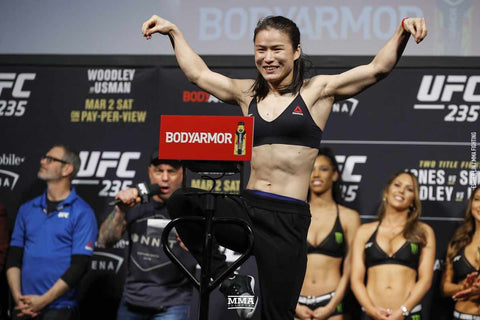
UFC Women's Strawweight Fighter Zhang Weili has become UFC's first Asian-born / Chinese Champion by knocking out Jessica Andrade in the first minute of the first round back at UFC Fight Night on August 31, 2019. With a nation of 1.4 billion strong behind her, she is a one-woman-army in leading the wave of interest back into Chinese Martial Arts.
Tony Ferguson has made it known publicly on social media that he trains Wing Chun Kung Fu, a southern Chinese / Cantonese style of close range Kung Fu made famous by Bruce Lee and Ip Man. Having the record of most consecutive wins in UFC lightweight history (with 12), Ferguson is widely regarded by pundits as one of the best lightweights in the history of the UFC. He was the interim UFC Lightweight Champion and he will get another chance to become the undisputed UFC Lightweight Champion when he takes on Khabib Nurmagomedov this April in 2020.
Zabit Magomedsharipov, a Shaolin Kung Fu, Sanda / Sanshou, and Wushu Kung Fu practitioner, is unbeaten in the UFC and quickly rising up the UFC featherweight rankings.
But what about Xu Xiao Dong, a retired MMA fighter in China famous for exposing fake snake-oil Kung Fu "masters" by beating him down with his MMA techniques who threatens to derail Kung Fu legitimacy forever?
Can the success of these fighters really be attributed to their Kung Fu training or backgrounds? Dynasty investigates.
A Blueprint: Karate's Resurgence Came First
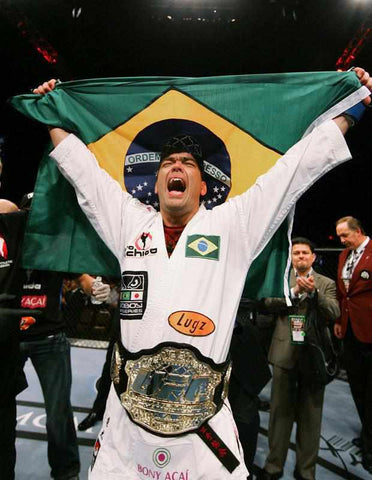
We remember it wasn’t too long ago that Japanese Karate (derived from the mixture of Chinese Fujian White Crane Fist Kung Fu and Ryukyuan Okinawa Martial Arts) was considered a joke until then-undefeated UFC Light Heavyweight fighter Lyoto Machida knocked out then-champion Rashad Evans to win the UFC Light Heavyweight Championship and made Karate into a serious martial art again.
Lyoto famously shouted: “KARATE IS BACK!” and with that historic win - Karate schools around the world enjoyed a huge resurgence in acceptance as a real legitimate combat art.

Soon enough, everyone started adding Karate training to their MMA game.
Vitor Belfort (UFC LHW Champion), Mauricio Shogun Rua (UFC LHW Champion, PRIDE Champion), Henry Cejudo (UFC FLW Champion, BW Champion, Olympic Gold Medalist), and last but not least, Conor McGregor (UFC FW Champion, LW Champion) all incorporated Karate training into their regimen either to know how to defend against the style or to utilize its attacks to devastating effect.
Many fighters started using the in and out, bouncy, point / precision fighting, one shot one kill style that Karate was known for.
After Lyoto Machida paved the way for Karate in MMA, Karate is now normalized as a legitimate martial art to train in as a combat sports / mixed martial arts fighter.
Other notable Karate fighters in UFC / MMA include Stephen "Wonderboy" Thompson, Michael "Venom" Page, to name a few.
Even Taekwondo Is Kicking It
While Taekwondo does not have its "definitive" representative like Karate does with the Japanese-Brazilian in Lyoto Machida, Taekwondo's spinning, high flying, flashy kicks are embodied in Raymond Daniels' fighting style, and is also instantly recognizable to the average martial arts fan.
Fighters such as Anderson Silva, Benson Henderson, Anthony Pettis, and the aforementioned Raymond Daniels, to name a few, have all brought Taekwondo kicks to combat sports to devastating fashion.
"Whatever Comes From My Fist Is Kung Fu"
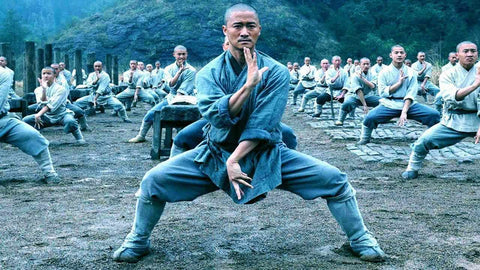
We know that the precursor to almost all Asian martial arts is Chinese Shaolin Kung Fu.
No matter if its Karate, Taekwondo, Jiu-Jitsu, Judo, etc. - all of their techniques originated in the many forms of Chinese Kung Fu styles that predate them by thousands of years.
So what's holding Kung Fu back? The answer is Kung Fu itself.
We take a deeper look at how Kung Fu holds itself back from modern development - without repeating what we've already covered in our previous blog post Where Are The Chinese Fighters?.
We've refreshed our observations and criticisms of Kung Fu and provided an updated set of solutions to tackle these problems.
Problem #1: Kung Fu is "Fake"?

Our first problem on the list is: Why does Kung Fu seem to always get such a bad rap?
The short answer: Fake snake-oil Kung Fu masters looking to make easy money off unassuming practitioners with their watered-down garbage has ruined Chinese Kung Fu for the rest of the world to enjoy.
If there is no good representative for your martial art, then that martial art style is forever laughed at by others, even though they may never understand the intricacies of the art.
And nobody is ever obligated to find out more about anything, really.
It's up to the art / artist to prove themselves worthy of being paid attention to / taken seriously.
A quick Google / YouTube search and 30 seconds later the average naysayer can be validated in their thoughts that so and so martial art style is weak or "doesn't work".
Especially for Chinese Kung Fu styles, when there is a guy named Xu Xiao Dong (and his training partners) who makes quick short work of supposed Kung Fu "masters" in China in highly publicized beat downs.
These (fake) Chinese Kung Fu masters are being embarrassingly knocked out left and right with ease by a fighter in Xu Xiao Dong who isn't even considered elite level.
On one hand - it's great that Xu Xiao Dong is exposing fake Kung Fu masters for the fraudsters that they are and waking people up to the truth.
On the other hand - this paints an overwhelmingly broad picture that ALL Kung Fu masters / practitioners who practice Chinese Martial Arts must be fake too.
That of course, cannot be true, because of traditional Kung Fu practitioners such as Tim Cartmell, who has applied his knowledge of internal Chinese Martial Arts into the development of his Brazilian Jiu-Jitsu game.

Tim Cartmell is a BJJ Black Belt and a highly respected author and martial arts instructor. He is known for having a deep understanding of internal Chinese Martial Arts styles including Baguazhang (Eight Trigram Palm - The Art of Circles), Xing Yi Quan (Shape Intent Fist), Taiji Quan (The Ultimate Fist), and more.
Just because a fake Karate master in America is exposed, doesn't mean all Karate fighters are fake.
Similarly, just because one exposes a handful of Kung Fu masters in China, doesn't make Kung Fu fake either.
Ultimately, however, this embarrassing situation in the Kung Fu world brought on by a guy like Xu Xiao Dong, can definitely put a nail into the coffin in discussions surrounding whether or not Kung Fu styles / techniques are legitimate or just fantasy fighting that only works in movies.
Add on the language and cultural barriers at play - and it becomes nearly impossible to decipher and figure out really what's real and fake in Chinese Kung Fu.
Most people take the easiest and quickest assessment - is it being used in combat sports / MMA / UFC? If it's not, we can all collectively assume Kung Fu is not worth looking into altogether.
Problem #2: A Lack of Fighting Intent

What is perceived on the internet will always remain true, even if what is perceived is based on a small scope of extremely bad examples of Kung Fu being demonstrated, yet enlarged with a magnifying glass with the help of the internet.
For the record, we at Dynasty hate fake Kung Fu masters as much as anyone out there.
We jump for joy when a guy like Xu Xiao Dong picks out phony Kung Fu masters that give Kung Fu such a bad name and beat them out of their minds.
However, with that comes a price - and the real Kung Fu guys and girls are the ones paying.
That price - hurts the real Kung Fu styles and techniques from being recognized, developed, respected, and spread to the greater combat sports world.
Let us take a step back at sensationalist headlines on YouTube and other clickbait articles, put on our Devil's Advocate hat and look at things from a different perspective for just a moment:
-
Xu Xiao Dong is mostly beating up some old, unathletic, untrained martial artists that don't train to fight.
-
Xu Xiao Dong is using a combination of martial arts (MMA), which when combined, is obviously going to have an advantage over one traditional style of martial art. This is a no brainer.
-
When a younger individual has shown up to fight in the ring representing Wing Chun or Tai Chi or whatever, they lose to a full contact Muay Thai fighter which is absolutely not surprising considering that these traditional Kung Fu guys lack fight training (not martial arts training) whereas Muay Thai fighters always train to fight as the main component of their martial arts training.
The comparison between styles in these types of scenarios is always going to be apples to oranges.
If we take a young, athletic Mike Tyson-type of guy and put him in a combat Wushu (Chinese Martial Arts) program where he does nothing but extremely hard training consisting of punching and kicking bags and lots of full-contact sparring, and pit him against an average Napoleon Dynamite-type of guy who does nothing but Taebo (no disrespect to Billy Blanks) cardio kickboxing training, the Mike Tyson Wushu guy is bound to clean Napoleon Dynamite's clock out 9 out of 10 times.

Case In Point: UFC newcomer Khaos Williams knocks out UFC Veteran Alex Morono at UFC 247. Little did we know, he studies Wing Chun Kung Fu with his trainer Jeff Wagner. Jeff Wagner shares his backstage chat with famed MMA coach Greg Jackson, the same trainer of UFC Light Heavyweight Champion and Greatest of All Time - Jon Jones.

This is a big difference between how each respective martial arts style differs in their training, conditioning, and intent.
Chinese Martial Arts as a whole suffers from this "intent" problem or a lack of it.
When these Kung Fu practitioners lose in the ring at the hands of the likes of Xu Xiao Dong, it's because they don't train with the intent to get their skills to be good enough at competitive fighting (which is the real problem), not because their style is "weak" or that it "doesn't work".
Sure, some fighting styles like western boxing and freestyle wrestling get to the "fighting solution" faster than others, but it doesn't make something like Taekkyeon or Judo "useless".
It just takes a different path of development - sometimes longer, sometimes shorter depending on the practitioner, the teacher, and the method of training - to get from training (point A) to the application (point B) to sport fighting (point C).
This means these Xu Xiao Dong deathmatches are more telling of these martial artists' training regiment than their actual style of fighting suggests.
Xu Xiao Dong, while beating up old Kung Fu masters and proving that their fighting skills are truly lacking in the world of combat sports is great, this is not much different than taking any average MMA fighter in America and asking them to go to your local strip mall Karate McDojo or Taekwondo McDojang and beating down their head Sensei / Sabumnim instructor.
It's almost a foregone conclusion that your average strip mall martial arts instructor is going to lose to a fighter who fights regularly, and trains to fight regularly.

Xu Xiao Dong beating up old Kung Fu "masters" in China is about as impressive as an MMA guy going to a Rex Kwon Do soccer mom dojo and beating up their Sensei. It's not that big of a deal - and it doesn't automatically mean Karate or Taekwondo doesn't work or isn't effective either. Context is everything.
Problem #3: The "Self Defense" / "Health Benefit" Argument (Excuses) Need to Die
As mentioned earlier, the majority of these Kung Fu schools / styles simply do not train with the intent of sports fighting in mind - which depending on who you ask either isn't a problem or a huge problem.
For our intents and purposes, since we are talking about fighting, we do consider this a huge traditionalist problem - one that fundamentally poisons the integrity and legitimacy of Kung Fu training.
If you're going to train a martial art just for the purposes of art, or for health benefits only, and not the martial part of it, then forget martial arts training, what we're really subjecting ourselves to then is just learning a form of dance.
Why go through all that trouble? Just take up Yoga, or acrobatic / stunt martial arts or something, and quit pretending we're training a martial art for "fighting".

Just learn sport wushu or movie martial arts. There's nothing wrong about performance martial arts, they look great, you still get all of the health benefits, and it looks like you could kick a whole lot of ass while doing it.
Another one of the most common if not most common "reason" given by Kung Fu practitioners in losing real fights is of course - the "my art is too deadly" excuse.
We don't buy that, of course.
Sure, the intent of training most types of Kung Fu is for self-defense, but good or even great self-defense should directly translate (and be a reflection) of fighting effectiveness for combat sports.
Chinese Martial Arts prides itself on being "used to kill", "not to fight".
Again, while that is ideal and all, and most certainly true during the time they were first invented... we're talking about the modern martial arts landscape here.
Claiming that the old arts were "perfect for what they were at the time" doesn't mean there cannot be a modernized version of it that exists today. Not wanting to modernize something is just pure laziness or admission that the martial art probably sucks.
Case in point: Japanese Jiu-Jitsu and Judo.
We've already learned that the development of the "Judo" branch of Japanese Jiu-Jitsu actually went on to become more effective and beat the old "traditional" Jiu-Jitsu when it came to fighting.
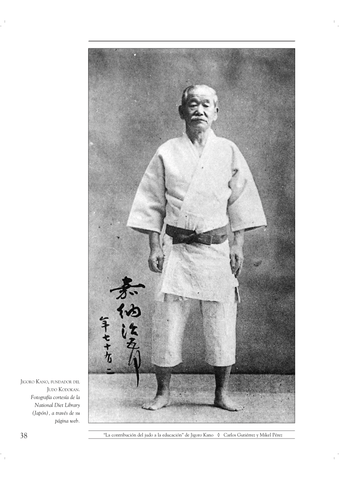
Jigoro Kano - Founder of Judo
Specifically, because the style of Judo was allowed to develop itself through sparring / fighting with full resistance as a sport, their techniques refined themselves through trial and error, and its practitioners became not just martial artists but combat athletes that were fight-ready.
What this ultimately taught us was this: A great "sport" martial arts equated to a great self-defense art (most of the time anyway - sport Taekwondo for example, on the other hand, went too far on the other end of the spectrum and is a lost cause).
Chances are, if you can't use it in a real fight with a 100% resisting opponent who's out there to take your head off or kill you, you can't use it for the "street" either.
Don't get us wrong, however, a sport is just a sport. It's not like you're allowed to grab a man's genitals while in full guard.
Yes, in a real fight there are no rules unlike sport fighting - we're highly aware of that.
Yes, there are eye gouges and groin attacks in self-defense oriented martial arts / Kung Fu and you can get very good at them and be able to fight off many threats.
However, those types of attacks only consist of maybe 10% of any martial art style or fight scenario. How many ways can you "self-defense" someone to death?
At the end of the day, you still need to cover the other 90% with real fighting skills.
And what's stopping a well-rounded combat sports athlete from putting you into a bad position and eye-gouging / groin attacking YOU?
The answer is none, so you "better train every part of your body" - as Bruce Lee once said.
Problem #4: No Sport / Self-Correcting Mechanism (Sparring / Fighting) In Kung Fu Perpetuates Fake Masters
Sparring or competitive fighting isn't encouraged in many Kung Fu styles due to some of these lesser-known reasons:
- Kung Fu is an umbrella term that means "all martial arts". But particularly for Wing Chun Kung Fu, this style used to be a "gentleman's" martial art that was practiced by the rich or noble who had spare time and money only.
The rich wouldn't want to hit each other in the head or face and cause unnecessary injury or visible harm to themselves as they still need to go out and appear at public functions and parties.
Thus, Wing Chun masters created an easier way to spar without hurting each other - Chi Sao (Sticky Hands) drilling - which mimics the techniques and hand sensitive movements / hand fighting you would use for sparring / fighting but at a controlled state - similar to "randori" in Judo or "rolling" in Brazilian Jiu-Jitsu.
The problem with this, however, is that Chi Sao over the years has overtaken "real" sparring in Wing Chun and creates a false sense of security since practitioners only do Chi Sao training but not real sparring.
- Bareknuckle Techniques: Most forms of Kung Fu are practiced without protective gear / barehanded.
In fact, it is often difficult to practice the same barehanded / bare-knuckle techniques effectively and use it with full force and killing intent if one uses protective gear or gloves.
Not only that, it would "sportify" (Judo) it's originally deadly techniques intended to kill (Jiu-Jitsu).
While these reasons are legitimate, because sparring isn't that commonly encouraged in Kung Fu aside from Sanda / Sanshou, fake Kung Fu masters can exist in any corner of the world because they can always choose not to fight.
As long as they're good with their forms, know a few interesting Kung Fu "magic tricks" like Chi Sao / Sticky Hands or Tai Chi Push Hands, they never have to prove any of their stuff even works in live combat.
Dynasty God of War (Guan Yu) Jiu-Jitsu BJJ Gi
Unlike a martial art such as Brazilian Jiu-Jitsu for example where sparring happens in every single class (although maybe not for long as it is being watered down today as well) - Kung Fu or Chinese Martial Arts does not promote a sparring / fighting culture where fraudsters eventually get beaten up and weeded out of the community.
As a result, these fake masters linger around, open their own schools to make money, and perpetuate "fakeness" and mediocrity in the Kung Fu community.
The solution?
Get modernized sparring gear designed for bare-knuckle fighting like a Kudo (Karate and Judo) astronaut helmet and start sparring each other harder / with aliveness.
Furthermore - there is too much "respect" or "face-saving" culture within the Chinese Martial Arts world in that practitioners aren't encouraged to go full contact with each other - and this needs to change.
If Kung Fu can be more widely promoted as a national combat sport under an organized body - such as by the Chinese government - we would start seeing these changes happen.
But until that happens, the only way Kung Fu can get its shine and recognition worldwide is most likely in modern Mixed Martial Arts.
Kung Fu Awaits It's Big Modern MMA Star
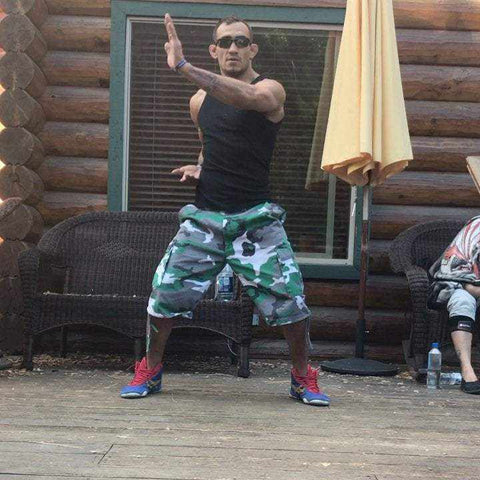
For the last few years, Tony Ferguson is (and has already begun) on the cusp of making the same resurgence happen for Chinese Kung Fu as Lyoto Machida did for Karate.
He is helping to garner renewed interest in a Southern Chinese close-range striking style known as Wing Chun.

He has been the only fighter so far to utilize Wing Chun in modern combat sports - at the highest level in fact - in the Ultimate Fighting Championships.
With his mix of western boxing, Wing Chun trapping hands and elbows, an amateur wrestling background, plus top of the food chain No-Gi Brazilian Jiu-Jitsu from the 10th Planet Eddie Bravo school, Tony Ferguson is a force to be reckoned with.

Master Wong Shun Leung (student of Ip Man, Kung Fu brothers with Bruce Lee) a.k.a. "The King of Talking Hands" showing Wing Chun elbows in the Biu Tze (Darting Fingers) form.
Wing Chun is also being made famous by celebrity practitioners - most notably Robert Downey Jr. of Marvel / Iron Man fame.
He recently appeared on an episode of the Joe Rogan Experience podcast and talked about how Wing Chun Kung Fu saved his life and gave him mental focus.
Joe Rogan & Robert Downey Jr. video clip talk Wing Chun Kung Fu.
Before Tony Ferguson made Wing Chun work in the UFC Octagon, however, there came arguably the greatest Asian combat sports fighter of our time in Sanshou Kung Fu legend Cung Le.
Cung Le was undefeated in Sanshou Kung Fu kickboxing and was the former Strikeforce Middleweight World Champion in MMA.
He proved pretty early on the effectiveness of Chinese Kung Fu. For it is not the style, it is the man behind the style.
Or as Donnie Yen in Ip Man said: "It's not the style. It's you."
While Cung Le first blazed a trail for Sanshou Kung Fu, Zabit Magomedsharipov is now the one continuing that trailblazing for Sanshou with his in-ring work inside the UFC Octagon.
Kung Fu Techniques Are Everywhere, Just Unnoticed or Unattributed
As Lyoto Machida showcased to the world, a martial art style is only as good as it's representation / best representatives. If it weren't for Lyoto Machida, Karate would not have made a resurgence in modern combat sports today.
The same goes for Kung Fu and Kung Fu techniques.
Kung Fu techniques are actually utilized in the combat sports world / MMA every day by fighters such as UFC Light Heavyweight Champion Jon Jones and former two-weight division UFC World Champion Conor McGregor, except no one knows they are Kung Fu techniques.

Jon Jones is the Greatest Kung Fu Fighter of All Time. He is the Grandmaster of trapping elbows, knee stomp kicks, shoulder strikes, shoulder and elbow busting locks, and finger jabs (eye pokes). This is not a joke or sarcasm - Kung Fu really works in real fighting when done correctly.
Conor McGregor's slapping hand counter left punch (Pak Sau / Da) is Wing Chun Kung Fu, his darting in and out stance is Fujian White Crane Fist Kung Fu, and his shoulder strike technique can be found in Kung Fu styles such as Ba Ji Quan (Eight Extremities Fist) and Feeding Crane Fist Kung Fu as well.
Even the Cuban Olympian and UFC Middleweight contender Yoel Romero arguably uses Kung Fu techniques. His "broken rhythm" striking style where he lulls you into a false sense of security (slow speed) before he explodes without warning (fast speed), and from different awkward angles, is reminiscent of the Drunken Boxing Kung Fu style where having no rhythm and no pattern is the key.
This was especially apparent in his recent fight against Paulo Costa, where he was displaying arguably the "modern" version of the Drunken Boxing Kung Fu style (also made famous by Muhammad Ali) - the "rope-a-dope" technique. Yoel Romero was making Paulo Costa miss a lot of his shots with his awkward movement and rolling of the punches.
Or how about taking a look at the Drunken Master himself,
Until famous combat fighters come along and claim they've used Kung Fu techniques in the cage, the general mainstream public will still cling onto the primitive thinking that belonged to the year 2000's - the belief that MMA only consists of Boxing, Wrestling, Jiu-Jitsu, and Muay Thai.

Oh, how far we've come since The Ultimate Fighter Season 1.
In the case of people like Xu Xiao Dong, instead of using "MMA" (which itself is not a style, but a mix of styles) to beat up old non-athletic, non-competitive useless snake-oil Kung Fu masters (which is extremely easy to do), we would actually like to see him do something more challenging:
Which is to take young, athletic kids into various Kung Fu styles (Wing Chun, Hung Gar, Tai Chi, Ba Ji, Xing Yi, Bagua, etc.) and bring those techniques into the modern age and make it applicable for MMA, so these arts can finally get recognition for their techniques that they deserve.
Doing that would be doing a much bigger service to Kung Fu / Chinese Martial Arts, and the global martial arts community in general, instead of kicking it down.

Kung Fu Needs To Evolve
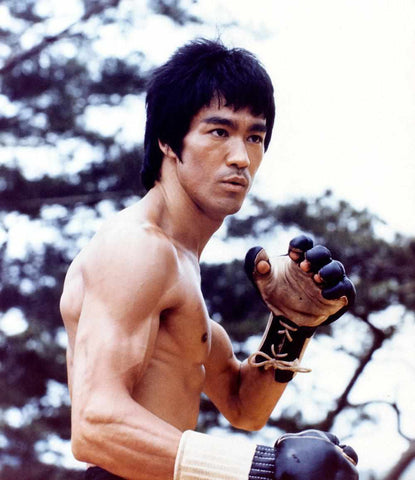
Bruce Lee, the Godfather of MMA, was the first to mix all martial arts styles together along with his Wing Chun Kung Fu base, to create the MMA of its time - Jeet Kune Do (JKD) - The Way of the Intercepting Fist or Foot.
Let this be a message to all practitioners out there of Chinese Martial Arts / Kung Fu:
We must do better. We must be better.
We must train the arts with the intent to fight with it, with the intent of killing with it, and train with the intensity and purpose of that of a professional combat sports athlete.
We must spar full contact, learn to adapt, evolve, and use it effectively for the modern era of fighting.
That is the only way we can keep Kung Fu alive, relevant, and real.
- Dynasty Team



Comments
TP said:
People tend to forget that majority of Kung Fu styles were developed for the military, not combat sport. It’s a mixture of weaponry and hand to hand. When u fight in a war u r going to use a weapon, but when that weapon is lost u will have to escape and defend yourself with ur hands and feet. But of course, combat is combat, there will be some similarities, it just needs adjustments and modifications, similar to what they did with Sanda/Sanshou. Same thing with Muay Thai, it was a military based martial art then modified into combat sport. But once u put the gloves on and use similar rules, it’s gonna look very similar to kick boxing or MMA.
Daniel Wright said:
Real Deal Xing yi Quan for developing real gongfu for real fighting does exist. Originally it came from training battlefield infantry soldiers to become fighting machines. It is the fastest, most powerful, and most direct gongfu I have seen, designed to end fights in the first exchange. It hasn’t been disseminated outside of China very much yet like a lot of Southern styles or even Shaolin because most of those old masters were too conservative and don’t want to teach the real stuff to outsiders. I learned it from a master in Shanghai for 10 years with live sparring. When he hits you it is like lightning and you have no chance to react. I don’t aspire to fight in the Octagon but if an MMA fighter learned it and mixed it with their bjj and other MMA skills, they would be on another level.
Kelly said:
Willie dixon- “blues is the roots, everything else is the fruits.”
Same applies to kungfu. Would I want to see a monk in the mma. Not really, my worry more is you compromise yourself in pursuit of glory, vanity, etc. These r all things that a monk actually does not want or care about!
It’s a sport where the best of the best are in a temple in China, where they should be allowed to carry on their tradition.
Would you ask a priest to fight? Does that make sense?
Used to train mma, boxing etc. Started into kungfu in my mid 30’s. I enjoy it more, and my enjoyment from life etc is most important to me.
Leo said:
That sort of kung fu you envision already exists. Back in Cuba, the end of each training session of our underground (not government-sanctioned) style was sparring. They were bareknucled fights, no protection allowed, and the only prohibition was a closed fist on the face -palm, fingers, and edges of the hand were allowed…
I must confess I dreaded that part as I knew there would be pain. Ah! No weight divisions. Does that sound like good fighting training?
Arthur H Harwood said:
Joe Rogan and all the other people out there which doubt Kung Fu applications and ability as real or not; I have studied since age 7 its helped me greatly.